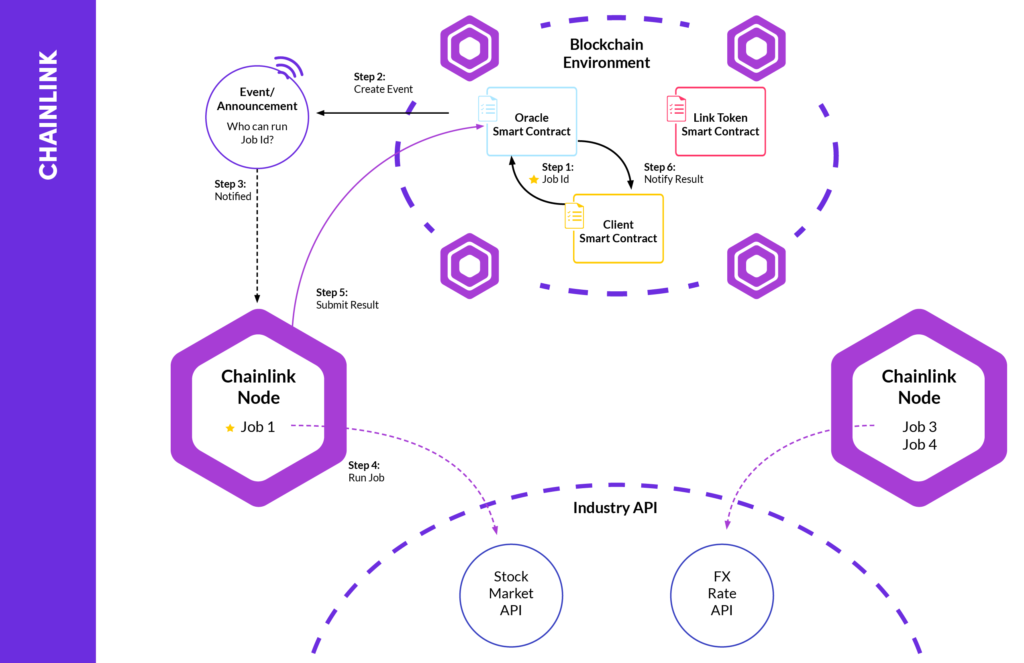-
Chainlink Runtime Environment (CRE) connects traditional finance systems with blockchain protocols, enabling seamless interoperability.
-
CRE facilitates legacy financial institutions’ adoption of blockchain without disrupting existing processes.
-
In Africa, CRE supports financial inclusion by addressing challenges like access to banking, high transaction costs, and inefficient remittance systems.
In an era where blockchain has slowly dominated major industries, the Chainlink Runtime Environment (CRE) emerges as a pivotal framework marrying legacy finance and Web3 in ways that could revolutionize Africa’s digital economy.
This marvel of invention prioritizes privacy-preserving cross-chain transactions, affordable cross-border payments, and secure enterprise Web3 integration frameworks.
CRE could be the ticket to address various systemic challenges rampant throughout Africa’s Web3 ecosystem.
Chainlink Runtime Environment: Revolutionizing Africa’s Web3 Ecosystem
What is the Chainlink Runtime Environment?
Chainlink Runtime Environment, or CRE, is a progressive innovation in financial structure integration, providing companies with a comprehensive framework to link current fee infrastructures with blockchain protocols seamlessly.
Most commonly known as SmartCon 2024, its capabilities are built on COBOL standard requirements—the cornerstones of electronic banking since its inception.
CRE seeks to modernize transaction tactics, replacing outdated structures like Java Runtime Environment (JRE), which has dominated online banking programs since the 1990s.
This secure enterprise Web3 integration framework lets developers pick and mix “libraries” of data, computation, and connectivity as easily as legacy systems once loaded with COBOL modules or Java environments.
The Chainlink Runtime Environment’s true strength lies in allowing traditional financial systems to interact with blockchain protocols while continuing with legacy systems, like SWIFT’s messaging protocol alongside blockchain networks.
CHECK OUT: Digital Fortress: How to Shield Your Web3 World in Africa!
For instance, Nigeria’s Flutterwave and Kenya’s M-Pesa could leverage CRE to enable low-cost blockchain onboarding for banks, modernizing remittances and microfinance services.
Privacy-Preserving Cross-Chain Transactions: Building Trust in Africa’s Financial Systems
Historically, privacy concerns have hindered large enterprises from fully embracing blockchain interoperability solutions. This is predominant in various sectors, such as finance and healthcare, that handle sensitive data regularly. By introducing tools like Chainlink’s Blockchain Privacy Manager, businesses can engage with blockchain without publicly exposing critical corporate information.
Additionally, introducing private transactions through Chainlink’s Cross-Chain Interoperability Protocol (CCIP) ensures that sensitive operations occur securely within decentralized environments.
A practical example? South Africa’s Absa Bank could use CRE to facilitate privacy-preserving cross-chain transactions for multinational corporations, ensuring audibility without compromising sensitive trade details.
Can CRE Unlock Affordable cross-border payments in Africa?
Implementing the Chainlink Runtime Environment has the potential to revolutionize financial inclusion across Africa. Unfortunately, many legacy mobile payments face a hurdle of high cost. How CRE reduces transaction costs is by routing payments through optimized oracle networks that batch, validate, and settle across chains in a single workflow.
The result? Affordable cross-border payments that rival traditional corridors on price and speed.

CRE facilitates the adoption of blockchain by legacy financial institutions without disrupting existing processes.[Photo: ChainLink]
By taking advantage of CRE’s secure enterprise Web3 integration framework, organizations can reduce transaction costs while increasing efficiency.
Chainlink and the Future of Web3 in Africa
As developers and startups across Africa look toward building custom solutions using tools provided by the Chainlink Runtime Environment.
Its blockchain interoperability solutions allow seamless communication between Web3 tools and legacy systems, unifying a divided ecosystem.
Local developers can leverage CRE to build dApps(decentralized applications) that interact with both local payment gateways and global DeFi platforms.
Furthermore, its applications also stem from a growing franchise in Africa: tokenization of real-world assets.
If applied correctly, a smallholder farmer in Ghana using CRE-powered platforms to access microloans backed by blockchain-verified land registries, democratizing capital access while reducing fraud.
Additional use cases include:
- RWA Tokenization: Issue a commodity-backed token on one chain, then distribute it across 50+ networks—each with local KYC, pricing oracles, and proof-of-reserve checks.
- Defi Innovation: Compose lending, yield-farming, and insurance modules to launch region-specific products—like crop-weather derivatives for smallholder farmers.
- Remittance Rail: Leverage CRE’s cross-chain messaging to connect diaspora wallets directly to local mobile money accounts, bypassing multiple FX conversions.
A notable example showcasing these advancements includes Chainlink’s pilot program involving SWIFT & UBS testing tokenized fund settlements.
This initiative demonstrates how conventional setups may interact harmoniously within digital economies without relying solely on cryptocurrencies.
CRE framework for financial institutions offers a chance to benefit from both worlds via its blockchain interoperability solution.
CHECK OUT: Ripple’s SEC Win: How Africa’s Crypto Traders Can Navigate XRP Regulations and Market Opportunities.
The Chainlink Runtime Environment represents a significant advancement in blockchain infrastructure, providing developers unprecedented flexibility, power, and reach.
Its microservices-inspired architecture, composable workflows, and cross-chain compatibility address key blockchain ecosystem challenges, particularly scalability and interoperability.
What Are the Limitations?
While CRE shines in flexibility and security, it’s not foolproof.
Network congestion can still delay settlements, and smaller institutions may face onboarding costs—even with low-cost frameworks.
Additionally, regulatory uncertainty remains a significant hurdle in Africa, with some further adding to the conundrum of implementing its use case to tackle local issues.
The Path Forward for Africa’s Blockchain Future
The Chainlink Runtime Environment offers Africa a unique opportunity to bypass outdated financial infrastructure and embrace Web3 on its terms.
From enabling privacy-preserving cross-chain transactions for enterprises to slashing remittance fees through affordable cross-border payments, CRE’s architecture aligns with Africa’s urgent needs.
As governments and developers collaborate to harness this framework, the continent could set a global benchmark for inclusive, efficient blockchain adoption.

